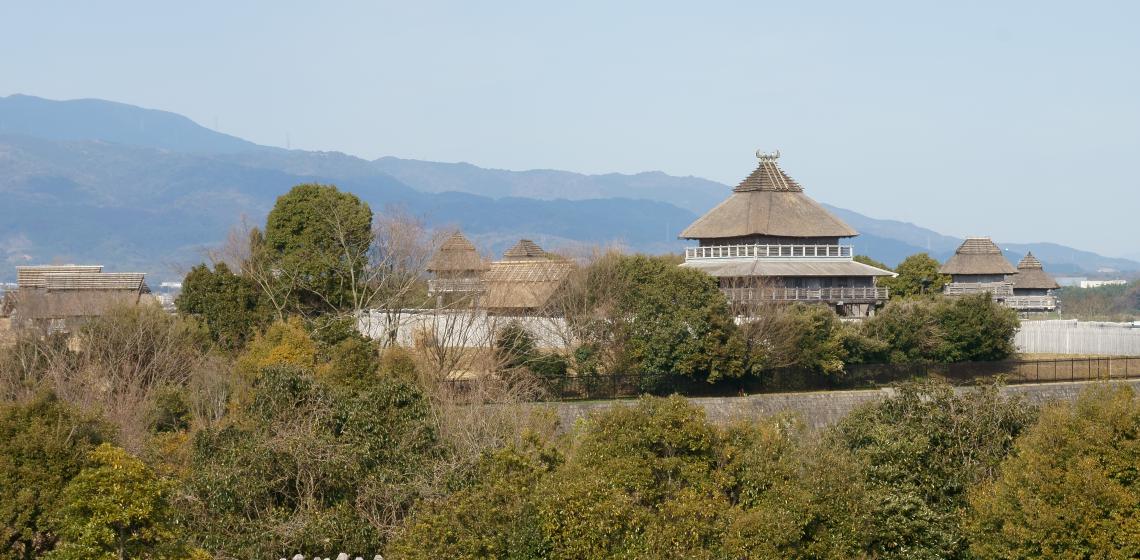Yoshinogari Historical Park (JP)

At the Yoshinogari Historical Park, visitors experience life in the ancient Yayoi period of Japan's history. Yayoi life and culture come alive through the carefully reconstructed village and unique exhibitions found here.
The Yoshinogari hills were originally slated for one of Saga Prefecture's industrial areas, but the project was suspended upon discovery of ruins and relics, until further research into the area could be carried out. In 1986, the site was meticulously studied to understand whether it was a truly important cultural site. The concluding result was that this area was one of Japan's largest moat encircled villages dating from the Yayoi period (3c. B.C. - 3c. A.D.). The location and layout of the village captured the imagination of Japan as it closely resembled the long disputed ancient country of Yamatai mentioned in early Chinese chronicles. The Yoshinogari ruins are of extremely high academic value and are an important cultural asset.
In 1992, the Yoshinogari ruins were designated a National Historical Park with the surrounding area made into a Saga Prefectural Park. In April 2001, the initial phase of the Park was opened to the public. The Park, as of April 1, 2009, measures 73.7 hectares (38.3 hectares of National land, 35.4 hectares of Prefectural land).
"The Moat-Encircled Zone" holds the main village, Minaminaikaku, the residential area of the rulers of this ancient "nation state", and Kitanaiakaku, which was used for ancient ceremonies and festivals.
Minaminaikaku
Judging from the scale of defenses, including the circular moats, fences and watchtowers, this is believed to have been the place where successive rulers of Yoshinogari resided. Four watchtowers, eleven pit dwellings, a meeting hall, a cooking house and various other structures, for a total of twenty, can be found here.
Kuratoichi
Lying west of Minaminaikaku, numerous storehouses have been discovered in this area leading to the belief that it was possibly the commercial center of the Yoshinogari "nation state". Three reconstructed storehouses used for taxes and market goods, ceremonial and festival goods, and the market overseer, respectively, can be located here.
Kitanaikaku
These nine large structures are believed to be buildings used during various ceremonies and festival performances.
Nakanomura
This area is believed to have been where ritual objects were made for use in festivities and political ceremonies held in the Northern Inner Enclosure.
Minami no Mura (South Village)
This is where the public is believed to have lived within the Yoshinogari village. A total of 27 structures have been restored, including raised-floor structures and pit dwellings.
Yayoi Life Museum (located within Minami no Mura)
This facility has a hands-on workshop able to accommodate up to 300 people and a work area that is open to the public where you can see how earthenware is restored. There is also a gallery, a video room, and a lounge area.
Kita Funkyubo (North Tumulus)
This is thought to be the special burial site where successive rulers of Yoshinogari village were laid to rest. The exterior has been restored and inside are 14 authentic Kamekan (burial jars) and replicas of archaeological finds on display. There is also a presentation explaining the nature of the site
Text source: Yoshinogari.jp
